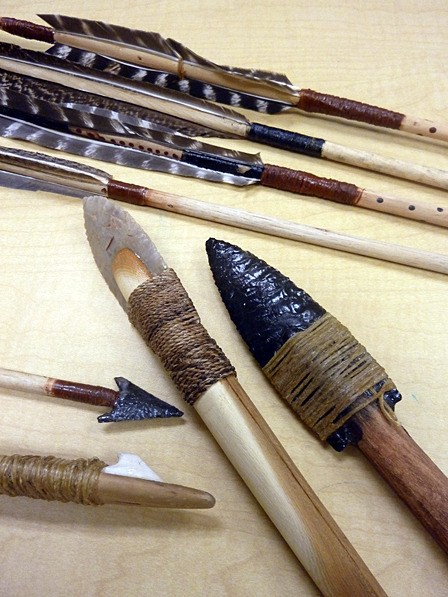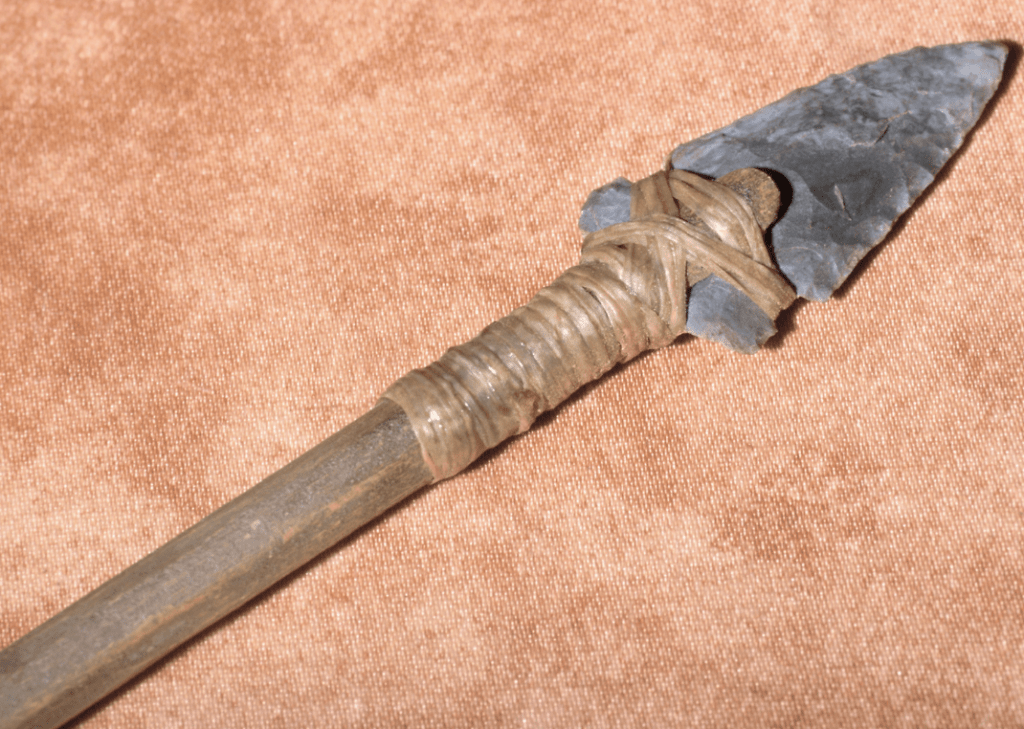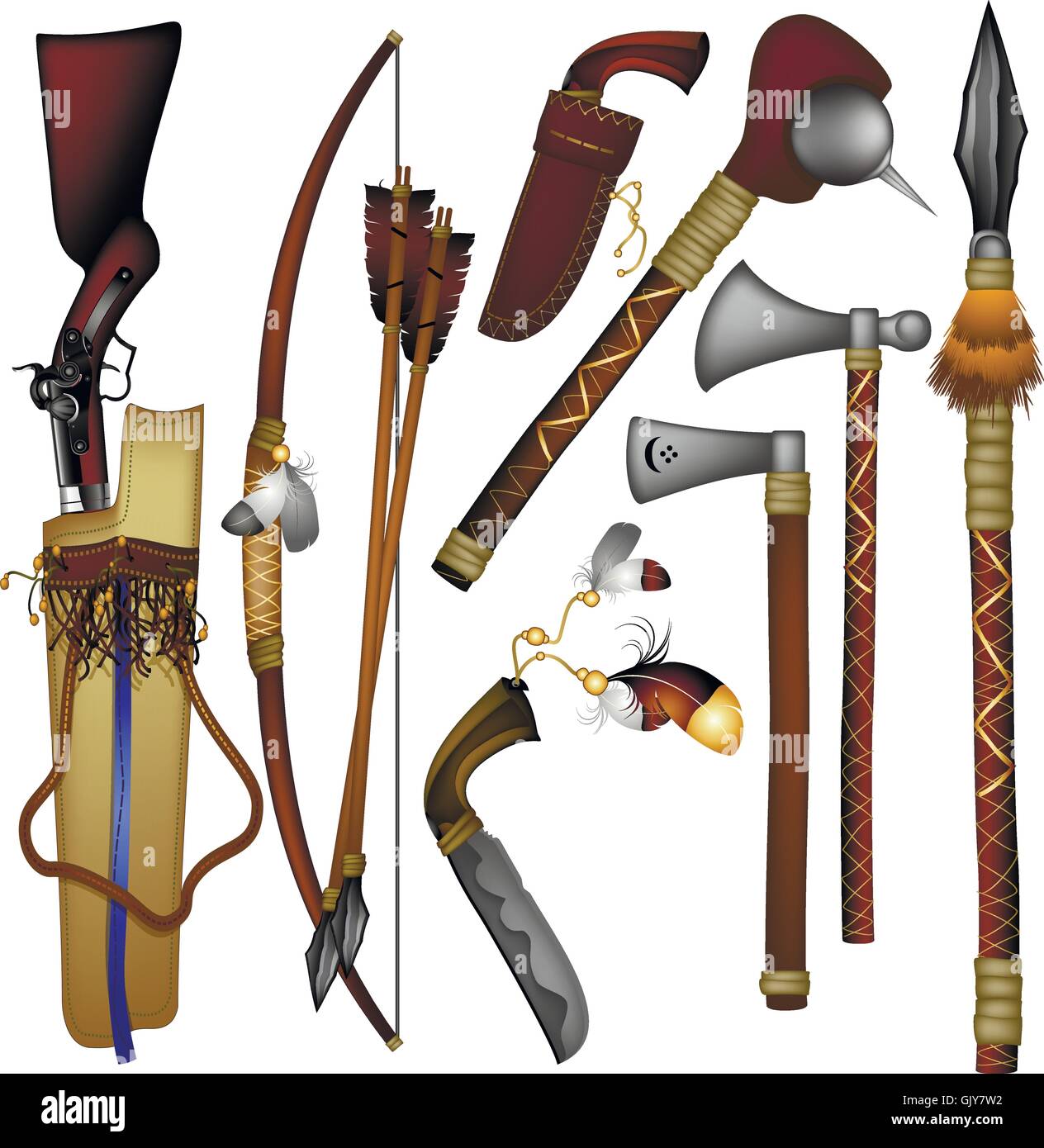
The Ingenuity of Survival: Native American Weaponry and Hunting Tools
This museum exhibit delves into the profound ingenuity, adaptability, and cultural significance embedded within the weaponry and hunting tools crafted by the diverse Indigenous peoples of North America. Far from being mere implements, these objects represent centuries of accumulated knowledge, sophisticated technological mastery, and a deep, respectful relationship with the natural world. From the earliest nomadic hunters of the Paleolithic era to the complex societies encountered by European colonists, Native American tool-making reflects a remarkable ability to harness local resources for survival, defense, and cultural expression.
The exhibition is organized thematically, exploring the evolution of technologies, the materials employed, the specific functions of various tools, and their broader cultural contexts across diverse geographical regions and time periods.
I. The Foundation: Materials and Craftsmanship
At the heart of Native American tool technology lies an unparalleled understanding of natural materials. Every component, from the core of a stone projectile point to the sinew binding a spearhead, was carefully selected and meticulously processed.

- Lithic Technology (Stone): Stone was the primary material for cutting, scraping, and piercing tools for millennia. Early artisans developed sophisticated techniques of "flint-knapping" or "lithic reduction," precisely striking flakes from a stone core (chert, flint, obsidian, quartzite) to create razor-sharp edges and intricate shapes. The exhibition showcases a chronological progression of projectile points – from the iconic Clovis and Folsom points of the Paleo-Indians, characterized by their distinctive fluting for hafting, to the smaller, finely crafted arrowheads of later periods. Displays illustrate various knapping methods, including direct percussion and pressure flaking, and demonstrate how different stone types offered varying degrees of hardness and workability.
- Organic Materials (Wood, Bone, Antler, Hide, Sinew, Plant Fibers): Wood, in its myriad forms, was essential for shafts, bows, clubs, and handles. Hardwoods like hickory, ash, and oak were chosen for strength and resilience, while softer woods might be used for carving. Bone and antler, particularly from deer, elk, and bison, provided durable materials for awls, needles, fishhooks, harpoon points, and specialized tools. Hide (leather) from various animals was processed for quivers, shields, and bindings. Sinew, the strong connective tissue from animals, was meticulously processed into thread for sewing, binding, and bowstrings, prized for its tensile strength and elasticity. Plant fibers, such as yucca, dogbane, and nettle, were twisted into cordage for nets, snares, and bowstrings, showcasing regional botanical knowledge.
- Hafting and Assembly: The art of "hafting" – securely attaching a working element (like a stone point) to a handle or shaft – was crucial. This involved intricate lashing with sinew or plant fibers, often reinforced with natural adhesives like pine pitch or hide glue. Examples demonstrate various hafting techniques, highlighting their strength and durability.
II. Projectile Weaponry: The Art of Distance
The ability to hunt and engage in defense from a distance was a cornerstone of survival.
- The Atlatl (Spear-Thrower) and Dart: Predating the bow and arrow, the atlatl (a Nahuatl word, but the concept was widespread) represents an early marvel of mechanical advantage. This hand-held lever, typically made of wood or antler, dramatically increased the velocity and range of a thrown spear-like projectile called a "dart." Darts were longer and heavier than arrows, often fletched with feathers for stability. Displays illustrate the physics of the atlatl, its widespread use from the Paleo-Indian period through the Archaic, and its eventual decline with the advent of the bow and arrow, though it persisted in some regions for specific hunting or ceremonial purposes.
- The Bow and Arrow: The introduction and widespread adoption of the bow and arrow, particularly during the Woodland and Mississippian periods, revolutionized hunting and warfare. This exhibit showcases the diversity of bow designs:
- Simple Self-Bows: Crafted from a single piece of wood, often limb-tipped or sinew-backed for increased power and durability, common across many regions.
- Composite Bows: Less common but present, particularly in the Arctic and Subarctic, made from multiple materials (wood, horn, sinew) laminated together.
- Plains Bows: Often shorter, powerful bows designed for use on horseback.
- Arrows: Comprised of a wooden shaft, fletching (feathers for flight stabilization), and a projectile point. Arrowheads varied immensely in size, shape, and material, reflecting regional prey and available stone. The exhibit details the craftsmanship of fletching, the meticulous process of straightening arrow shafts, and the various methods of hafting arrowheads. Quivers, crafted from hide, bark, or woven materials, often beautifully decorated, are also displayed.
- Spears and Lances: While the atlatl dart was a thrown spear, longer, heavier spears and lances were employed for thrusting, particularly in close-quarters hunting of large game (like bison) or in warfare. These typically featured sturdy wooden shafts tipped with large stone, bone, or later, metal points.

III. Close-Quarters Combat and Utility Blades
Beyond projectile weapons, a range of tools served for both utility and direct engagement.
- Clubs: Simple yet devastating, clubs were essential for both hunting (dispatching wounded game) and warfare. Designs varied widely:
- Plain Clubs: Often a naturally heavy piece of wood.
- Skull-Crushers: Clubs with a heavy stone head securely hafted to a wooden handle, particularly prevalent among Plains and Eastern Woodland tribes.
- Gunstock Clubs: Post-contact, these mimicked the shape of a rifle stock, sometimes inlaid with metal blades.
- Axes and Tomahawks: Pre-contact axes were typically ground stone axes (celts) or grooved axes, used for felling trees, woodworking, and occasionally as weapons. With European contact, metal axe heads and tomahawks became highly prized trade goods, revolutionizing woodworking and becoming iconic weapons. The exhibit highlights the transformation from stone to metal axes and the development of the multi-purpose tomahawk.
- Knives: Indispensable tools for butchering, hide processing, crafting, and defense. Native American knives were crafted from flaked stone (chert, obsidian), bone, or antler, often with a carefully shaped handle. Post-contact, metal blades (often repurposed from trade knives or other metal objects) became common, offering superior sharpness and durability. Sheaths, made from hide or bark, protected the blade and allowed for easy carrying.
IV. Ingenious Hunting and Fishing Devices
Native American hunting and fishing strategies extended far beyond active pursuit, encompassing sophisticated passive trapping and harvesting technologies.
- Traps and Snares: For small to medium-sized game, ingenious traps and snares were devised using bent saplings, cordage, and bait. These often relied on intricate mechanisms to capture animals alive or dead, minimizing energy expenditure.
- Nets and Weirs: Large-scale fishing often employed nets woven from plant fibers, sometimes weighted with stone sinkers and buoyed with floats. Fishing weirs, elaborate structures of stakes and woven materials built into rivers or streams, directed fish into confined areas for easy capture, demonstrating sophisticated ecological understanding and communal effort.
- Harpoons and Leisters: Particularly important in coastal and Arctic regions, harpoons featured barbed points (often detachable) designed to pierce and hold marine mammals or large fish, connected to a recovery line. Leisters, or fish spears, often had multiple prongs to impale fish.
- Decoys and Calls: Hunters employed a variety of decoys (e.g., carved wooden ducks, stuffed animal hides) and calls (e.g., bone flutes, bark trumpets) to mimic animal sounds and movements, luring prey within range.
V. Defensive Gear
While offensive weaponry is often highlighted, defensive strategies and equipment were also integral.
- Shields: Primarily used by Plains tribes, shields were typically made from thick, hardened buffalo rawhide, often adorned with painted designs and feathers that held spiritual significance, believed to offer protection beyond their physical properties. Their relatively small size allowed for maneuverability, especially on horseback. Other regions might employ wooden shields or protective armor made from slats of wood or bone, particularly in the Northwest Coast and Arctic.
VI. Cultural Significance and Evolution
The objects in this exhibit are more than tools; they are powerful cultural artifacts. They reflect:
- Survival and Adaptation: Each tool is a testament to the ingenuity required to thrive in diverse and often challenging environments.
- Spiritual and Ceremonial Roles: Many weapons and tools were imbued with spiritual power, used in ceremonies, or adorned with symbols representing personal power, animal spirits, or cosmological beliefs.
- Status and Identity: Finely crafted or decorated weapons often indicated the status, skill, or prestige of their owner.
- Trade and Exchange: Tools and materials were significant trade items, fostering extensive networks across the continent.
- The Impact of European Contact: The arrival of Europeans introduced new materials and technologies – metal, glass beads, firearms. While some traditional tools persisted, metal axes, knives, and particularly firearms quickly became highly sought-after. This shift profoundly impacted hunting efficiency, warfare tactics, and intertribal relations, representing both new opportunities and significant challenges to established cultural practices.
Conclusion
The Native American weaponry and hunting tools on display offer a window into the extraordinary human capacity for innovation and adaptation. They tell a story of intimate connection with the land, profound resourcefulness, and the enduring spirit of diverse cultures. By examining these artifacts, we gain a deeper appreciation for the complex histories, technological brilliance, and cultural richness of the Indigenous peoples of North America, whose legacy of ingenuity continues to inspire and inform us today.


